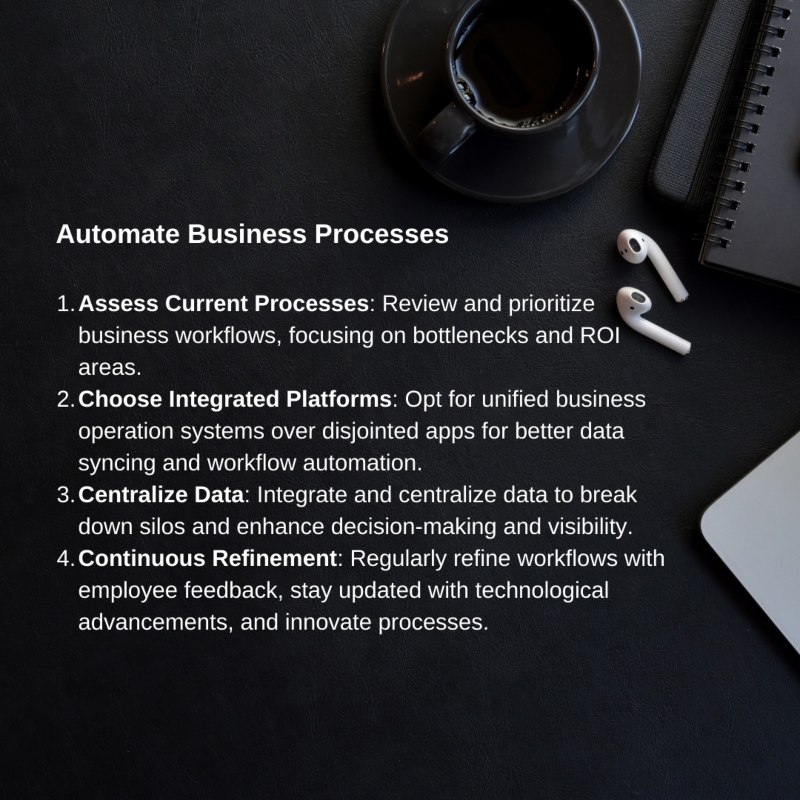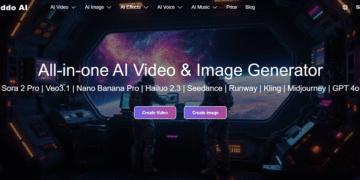Running a business involves dozens of critical workflows, from hiring staff to billing clients. It’s impossible to manage all those complex processes efficiently without the right tools. This article will explore easy ways business leaders can optimize performance in 2024—by unifying and automating workflows with intelligent digital platforms. Many of the cutting-edge solutions discussed here can digitize your manual tasks like inventory and invoicing in no time—saving you money while allowing you to focus on other areas of business growth.
Assess Current Processes and Identify Priorities
When was the last time you thoroughly reviewed all your critical business processes? If you’re like most entrepreneurs, you probably just work with existing systems without considering if those workflows are genuinely efficient. Optimizing practices across departments should be an ongoing initiative.
Start by collecting data and feedback:
- Document all systems from lead tracking to inventory. Detail each step within those workflows. Include pain points flagged by your team.
- Identify priorities by asking two key questions:
- What areas have the tightest bottlenecks or biggest quality issues? Focus first on fixing processes that directly impact revenue and customer satisfaction.
- Which optimizations will provide the most return on investment? For example, automating your previously manual invoicing may save 50 hours a month.
Keep the 80/20 rule in mind as you assess current processes. Target the 20% of workflows causing 80% of inefficiencies. Even modest changes there can make a significant productivity impact.
With honest assessments of workflows and priorities for improvement, you can start the upgrade process using today’s no-code digital business tools and platforms.

Choose an Integrated Business Operations Platform
When optimizing workflows, resist the urge to slap on disjointed apps that target single issues. Rather than using disconnected apps that don’t sync, consider a unified business operating system that connects data across sales, marketing, operations, and HR.
Benefits of a Unified Platform include:
- Central Dashboard: You will get real-time visibility into KPIs from a single dashboard instead of toggling between platforms.
- Improved Workflows: You can automate multi-step processes without coding via drag-and-drop workflow builders.
- Enhanced Collaboration: Your business teams or employees can communicate within the platform to align on projects and tasks.
- Customization Options: Most platforms can be tailored to your needs with easy tools that don’t require technical coding experience instead of rigid off-the-shelf software.
When evaluating all-in-one business operating systems to optimize your businesses, look for the following features:
- Process Digitization: Convert manual paper trails into structured online workflows with intelligent forms and comprehensive data storage.
- In-Depth Customization: Easily tailor the platform to your existing processes without coding through drag-and-drop builders and customizable tables, charts, calendars, and more.
- Automation: The software should be able to set up triggers that kick off automatic actions like sending emails, assigning tasks, and updating records.
- Analytics: Gain insight with reports and dashboards that track KPIs across all unified company data.
- Accounting: Send invoices, track expenses, manage payroll, and more from one system.
Leading platforms check all those boxes to drive workflow optimization across departments. The right business operating system will empower you to easily enhance workflow—from document-driven HR onboarding to field service management.
Centralize Data and Maximize Visibility
Before you can optimize workflows long-term, first focus on centralizing your data and integrating the systems you currently use to eliminate friction and fragmentation:
- Break down data silos spread across separate programs and files.
- Give all departments a “single source of truth” for company information.
- Prevent redundant data entry and manual transfers between systems.
Consolidating your data gives your business many benefits. Here are tips to integrate your data:
- Build a secure permission system so staff access complete customer records spanning sales interactions, service issues, and accounting data.
- Enable teams to easily filter datasets, create reports, and set up real-time dashboard views of KPIs like lead conversion rates.
- Set up business intelligence integrations to visualize emerging trends and extract deeper insights from your unified data. Identify issues and opportunities.
- Digitize paper trails by structuring manuals, contracts, and inventory records into online databases with easy lookup.
With silos broken down and abilities to filter data, your workforce gains transparency to make faster, more informed decisions. Managers also have greater insight to course-correct workflows if metrics dip or patterns shift.
Centralization also powers optimization. With the foundation of centralized data and integrated systems in place, you can layer on continuous optimizations over time without having to restructure entire processes later. Consolidating data also minimizes risks related to privacy and security. The right unified platform simplifies future innovation—from adopting business analysis and intelligence to exploring more business automation tools. But it all starts with data integration.
Continuously Refine and Innovate
Optimizing your business workflows cannot be a one-and-done project. To ensure maximum efficiency as your company grows and changes, adopt a flexible system that allows fluid process improvements over time.
Tips for Continuous Optimization:
- Collect regular employee feedback on what’s working and what’s still clunky in both new and legacy workflows. Be open to tweaks.
- Stay on top of innovations that could be integrated. Cloud software, AI, and automation tools are rapidly advancing.
- Schedule bi-yearly reviews of processes and tools to upgrade your workflows. Identify emerging pain points.
- Explore which manual processes now have viable automation options to implement. For instance, investigate if emerging technologies like AR-powered scanning, eSignature approvals, or AI-enabled data analysis could help reduce repetitive administrative work.
- As you grow, proactively optimize your onboarding and training content so adding staff is plug-and-play.
Avoid workflow degradation over time by consciously iterating. Evolving technologies also open up new optimization opportunities to discover. Keep refining how you refine.
Conclusion
Running a competitive business today requires more than grit—you need intelligent systems. Modernizing workflows may seem daunting, but it can be straightforward with the right approach. As this article explored, by outlining priorities, choosing comprehensive automation platforms, and continuously innovating, leaders can easily shape efficient processes perfect for scaling growth in 2024 and beyond. When operations run smoother, companies thrive faster.
David Prior
David Prior is the editor of Today News, responsible for the overall editorial strategy. He is an NCTJ-qualified journalist with over 20 years’ experience, and is also editor of the award-winning hyperlocal news title Altrincham Today. His LinkedIn profile is here.













































































